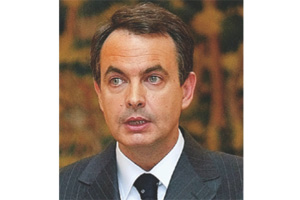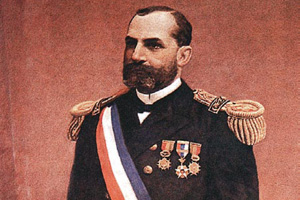Plateaus and mountains
Spain is located in southwestern Europe and covers most of the Iberian Peninsula. Its continental territory also includes the Balearic Islands in the Mediterranean Sea and the Canary Islands in the Atlantic Ocean. The autonomous cities of Ceuta and Mellila, although they are in Africa, are also part of Spain, as are three other island groups near Africa whose sovereignty is disputed by Morocco.
Mainland Spain is bounded to the north by France, Andorra and the Bay of Biscay; to the west by the Atlantic Ocean and Portugal; to the south by the Atlantic Ocean, the Strait of Gibraltar, and to the south and east by the Mediterranean Sea.
Its landscape is made up of a central plateau surrounded by a number of mountain ranges (the Cantabrian Mountains, Iberian Mountains, and the Betica Mountains). The large pre-alpine depressions of Ebro and Guadalquivir are found at the foot of the plateau. There are also independent mountain formations, such as the Pyrenees and the Penibético system, where Mulhacén is the highest peak at 3478 metres above sea level. The Miño, Ebro, Duero, Tajo, Guadania and Guadalquivir Rivers are among Spain’s largest.
Services and Industry
Spain is the eighth largest economy in the world and one of the largest in Europe. In fact, in recent years it has achieved annual Gross Domestic Product (GDP) growth of around 3.4%, above the average of the European Union (EU) and of such countries as the United Kingdom, France, and Germany.
Spain has traditionally been a farming country, and today, although only employing 6% of the working population, this sector produces important exports, making Spain the world’s largest producer of olive oil. Nonetheless, the service (commerce, tourism, transport, technology etc.) and industrial sectors (metal, machinery, textiles, shipbuilding, winemaking, food etc.) contribute to more than 80% of GDP.
Intermarriage and immigration
The Spanish ethnicity has arisen from intermarriage between the original peoples of the peninsula and those who arrived over the centuries (Iberians, Celts, Phoenicians, Greeks, Romans, Visigoths etc.). There are also Jewish and Arabic influences. Spain has also been the destination of much Latin American, Moroccan and sub-Saharan African immigration in recent years.
The Spanish population is mainly urban (around 80%)
A King, a President and Autonomous Communities
Spain is a parliamentary monarchy where the Head of State is the King and the Head of Government is the President. The election of the President takes place in the Congress of Deputies, through a process called the «Debate of Investiture», and his presidential oath is taken by the King.
The Legislative branch is made up of the Congress of Deputies, formed by 350 members, and the Senate, which has a total of 259 parliamentarians. The Supreme Court is at the apex of the judicial system, which includes district, provincial, regional and municipal courts.
The country is divided, in political-administrative terms, into 17 autonomous communities which each have an elected Parliament and a regional government. These communities may be divided into one or more provinces. This system also provides for Ceuta and Melilla, whose statutes of autonomy give them the rank of autonomous cities.








